Media Statement by Dr. Ong Kian Ming, Head of the Penang Institute in Kuala Lumpur, and Darshan Joshi, Research Analyst at the Penang Institute in Kuala Lumpur, on the 21st of February 2018
Analysing Malaysia’s Development Expenditure (DE) in the Federal Budget
The recent call [1] by noted economist KS Jomo to slash the development expenditure (DE) allocated to the Prime Minister’s department and to scrutinize big infrastructure projects such as the East Coast Rail Line (ECRL) is a timely reminder of an issue that has been previously raised by opposition members of parliament. But what has been lacking thus far is a more systematic analysis of the details of the development expenditure, especially under Prime Minister Najib’s tenure as Finance Minister, and specifically, the DE allocated to the Prime Minister’s Department.
Penang Institute in Kuala Lumpur (PI in KL) has produced a report detailing the evolution of the DE in the Federal Budget over the past decade. The highlights of this report include:
(1) The allocation for Development Expenditure has dropped from RM53.7 billion in 2009 to RM48.0 billion in 2018 during Najib’s tenure as Finance Minister. At the same time, the share of DE in the total budget has fallen from 27.8% in 2010, a year into Najib’s tenure, to a paltry 17% in Budget 2018. (Refer to Figures 1 and 2 below)
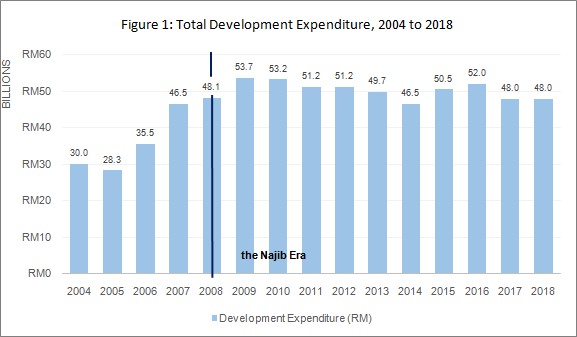
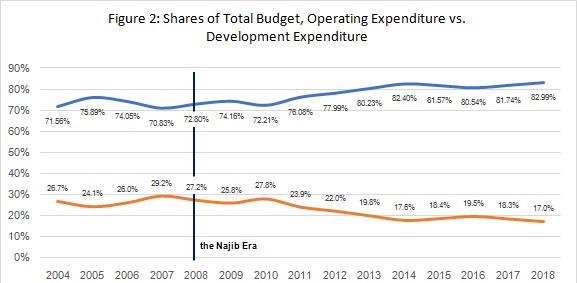
(2) The share of the PMD DE as a % of the overall DE jumped from 7.62% in 2008 to 19.15% in 2009. In absolute terms, it increased from RM3.7 billion in 2008 to RM10.3 billion in 2009. Incidentally, the 2009 budget was Najib’s first budget as Finance Minister. He became the Prime Minister in March 2009. The share of PMD’s DE reached a high of 27.5% or RM14.3 billion in 2016 before falling to 25.5% or RM12.2 billion in 2018. The average allocation to the PMD from 2005 to 2008 was RM3.25 billion, or 8.3% of the total DE budget, but under Najib, the figure increased to an average of RM10.75 billion or 21.4% of the total DE budget. (Refer to Figure 3, and Table 1, below)
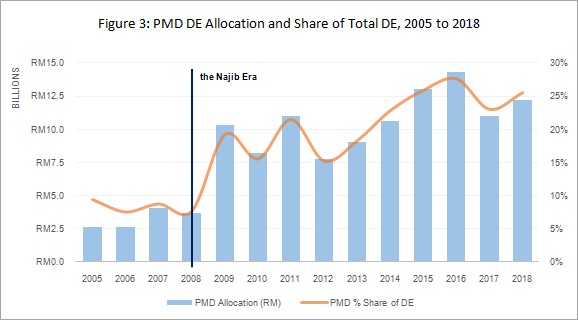
Table 1: PMD Development Expenditure (2005 to 2018)
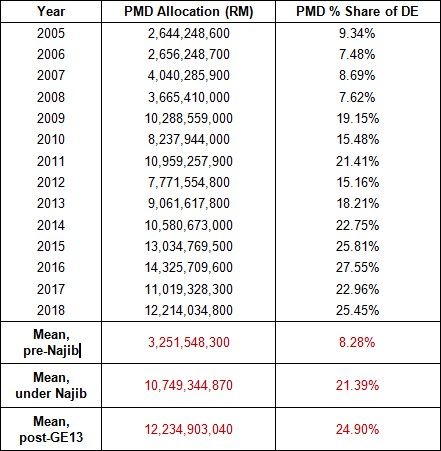
(3) The allocation of a significant proportion of the DE to the PMD is done in an opaque and non-transparent manner. Big amounts of spending are lumped together and classified under very general descriptions such as “Special Projects”without clear definitions as to how these are to be spent. The absence of clear definitions of spending for these “Special Projects” heightens the risk of potential abuse and corruption. It gives room, for example, to the Prime Minister to allocate a proportion of funds reserved for ‘Special Projects’ to politically connected contractors in BN areas. These funds have been called “slush funds” by the Kluang MP, Liew Chin Tong [2]. From 2010 to 2018, a total of RM43.7 billion of the allocations to PMD DE can be categorized as “slush funds”. They include:
1) Dana Fasilitasi (Facilitation Fund) allocated a total of RM20.28bn;
2) Penyusunan Semula Masyarakat (Restructuring of Society), RM5.46bn;
3) Projek Khas (Special Projects), RM5.43bn;
4) Program Pembangunan (Development Programs), RM4.27bn;
5) Projek Mesra Rakyat (People Friendly Projects), RM4.26bn;
6) Projek-Projek Kecil (Small Projects), RM1.91bn;
7) Penyelarasan Program Pembasmian Kemiskinan (Coordination Programs for Poverty Eradication), RM1.08bn; and,
8) Projek Kemiskinan Semenanjung, Sabah, dan Sarawak (Poverty Programs in Peninsular Malaysia, Sabah and Sarawak), RM1.01bn
(4) In the four years between 2012 and 2015, these “slush fund” projects consistently received over 55% of the share of PMD DE; in fact, in 2013 and 2014, the “slush fund” share of PMD DE was over two-thirds. Figure 4 illustrates graphically the breakdown of total DE allocations to the PMD between 2010 and 2018, between “slush fund” and “non-slush fund” uses. It highlights the fact that since 2012, the “slush fund” has attained a very significant component of total PMD DE (it formed the majority of PMD DE from 2012 to 2015). Table 2 below shows that the “slush fund” allocation reached a peak of 67.2% of the PMD’s DE budget in 2014 before falling to 45.4% in 2018.
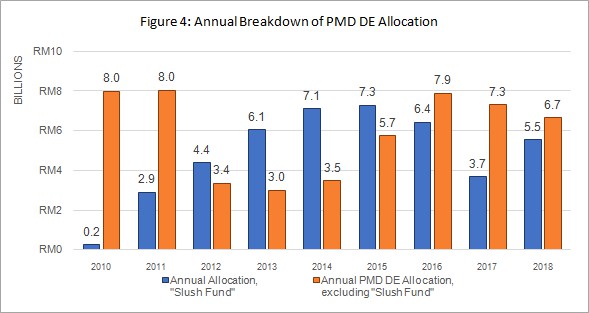
Table 2: “Slush Fund” Projects

(5) The negative effect of an increase in the allocation to these “slush fund” projects is the corresponding decrease in DE allocations to the Ministry of Education, Higher Education and Health. Table 3 below shows the decrease in DE allocations for MOE, MOH, and MOHE from 24.6% in 2010 to 12.3% in 2018. At the same time, the allocation for the “slush fund” projects in the DE for the PMD increased from 0.47% in 2010 to 11.6% in 2018. Figure 5 graphically depicts the cumulative “slush fund” allocation between 2011 and 2018, against the cumulative decrease in the DE allocations to the MOE, MOH, and MOHE based on 2010 baseline figures. This means that fewer new schools, institutions of higher learning, hospitals and community clinics were built as a result of the “slush fund” allocation ‘crowding out’ the DE spending for these three key ministries.
Table 3: Crowding Out Effects of PMD “Slush Fund” on Ministries’ DE Share

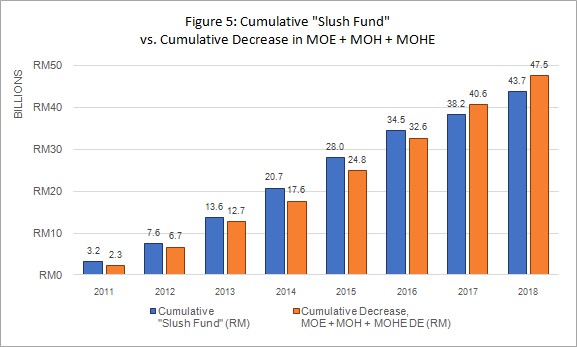
To conclude, this report has shown that both the absolute total, and % allocation, to the DE in the federal budget has decreased during the Najib era. At the same time, the overall allocation to the PMD has increased significantly, by roughly threefold, during this period. Moreover, the DE allocation in the PMD to “slush fund” projects has increased significantly to an average of half of the PMD’s DE. This increase has ‘crowded out’ and reduced the DE allocated to the MOE, MOHE and MOH, resulting in fewer schools, fewer institutions of higher learning such as community colleges and universities and fewer hospitals being built under the Najib era. It is clear from this analysis that the pattern of federal budget allocations must be re-considered and re-prioritized. The amount of DE allocation given to the PMD must be cut significantly, , starting with the “slush funds”.
[1] https://www.themalaysianinsight.com/s/36041/
[2] http://www.themalaymailonline.com/malaysia/article/slush-funds-in-budget-for-pms-department-deplorable-says-mp
